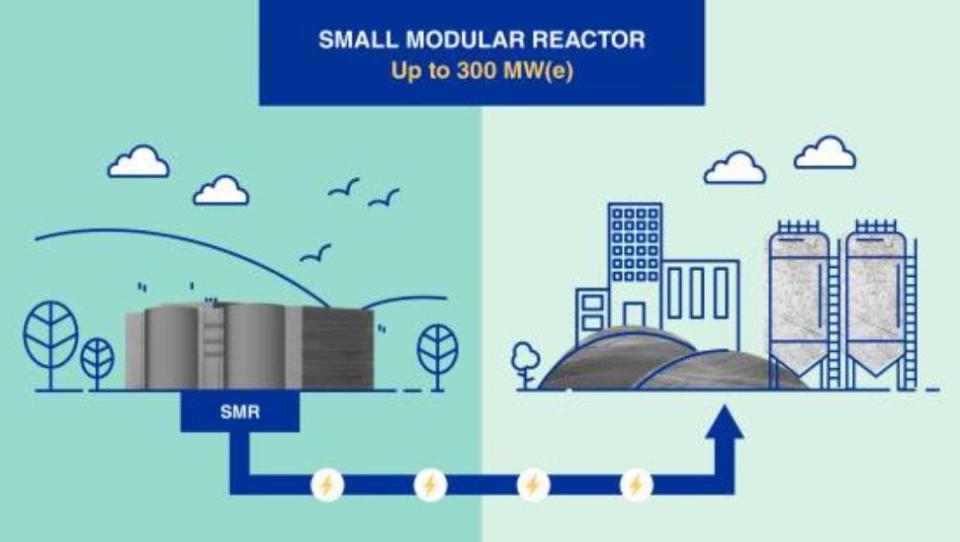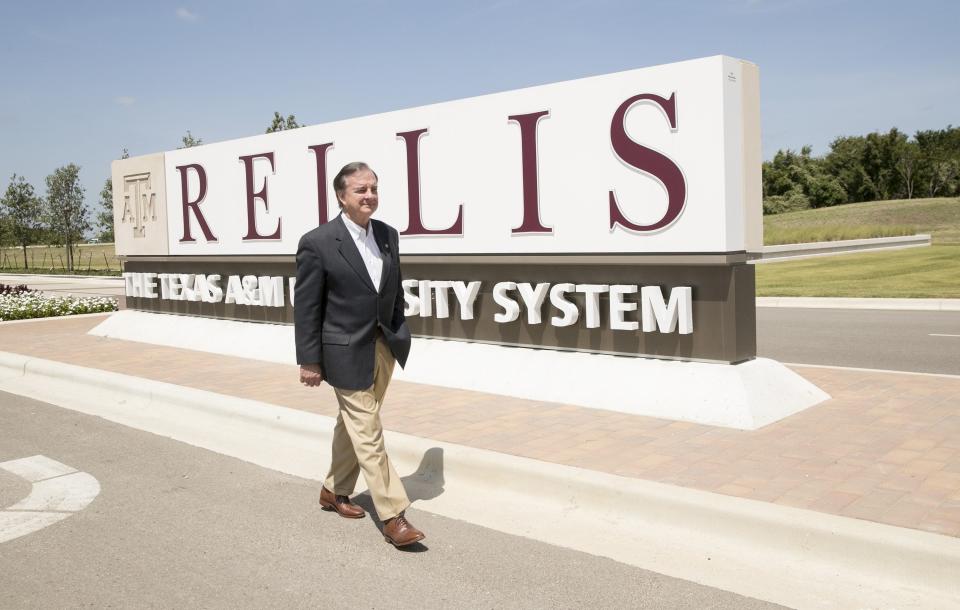Why Texas A&M University wants state-of-the-art nuclear power plants on its campus
Texas A&M University, which has one of the nation's two largest nuclear engineering centers, is seeking proposals that would lead to the installation of several small nuclear power generating plants at its College Station campus — an initiative that the system's chancellor says can shore up the state's power grid and prove the safety of modern reactors.
"These reactors that we have now are not your granddaddy's 'Three Mile Island reactors,'" Texas A&M system Chancellor John Sharp told the American-Statesman, referring to the 1979 partial meltdown of a reactor in Pennsylvania. "They are very different."
Sharp, who oversees the system's 11 universities and eight state agencies, said nuclear energy is vital to meet what is forecast to be a near doubling of the state's demand for electric power over the next six years. And the system recently joined the Texas Nuclear Alliance, an advocacy organization formed in the wake of the deadly February 2021 snow-and-ice storm that left millions without power over several days and nearly led to a catastrophic meltdown of the state's electric grid.

Reed Clay, who heads the Nuclear Alliance, told the Statesman the storm "revealed Texas’ overreliance on intermittent energy sources."
"The Alliance is based on the fundamental premise that if Texas and the world want low-carbon, reliable energy, it can no longer turn its back on nuclear energy," Clay said. "Nuclear is clean, safe, reliable and secure."
Modern reactors are smaller than traditional nukes
The reactors A&M hopes to bring to its research-focused RELLIS campus near the system's flagship university are just a fraction of the size of the traditional nuclear plants like the ones in Comanche Peak, about 55 miles southeast of Fort Worth, and the South Texas Project facility in Matagorda County near the Gulf Coast.
In September 2021, A&M's Engineering Experiment Station established a new Center for Advanced Small Modular and Micro Nuclear Reactors.
Called "small modular reactors," the newer-generation plants are a fraction of the size and can be manufactured offsite, trucked to their permanent locations and buried underground, which proponents say is both safer and better protects them from being targeted by terrorists or other hostile forces.
The first small modular reactor in Texas will be located on Dow's Seadrift plant just north of San Antonio Bay near Victoria. Dow is partnering with the company X-energy on the project that was bolstered by an an initial $80 million grant from the U.S. Energy Department. Construction is expected to start in 2026 and electric generation is targeted for 2030.
U.S. to fund small, modular nuclear reactors
Do smaller nuclear reactors mean safer equipment?
While Sharp, the companies involved in the Seadrift project, members of the Nuclear Alliance and the Energy Department tout the safety and zero-carbon attributes of small modular reactors, the head of the Sustainable Energy and Economic Development Coalition said the technology's drawbacks are being glossed over.
"The hype is exactly that — hype," said the coalition's executive director, Karen Hadden. She said the issues in play with traditional nuclear plants, such as radiation leaks, and the disposal of waste that remains dangerous for several millennia are also a risk with the smaller reactors.
"If there is an accident, it's going to be bad, it's going to be serious, and people will get irradiated," Hadden said. "I'm very worried about that. The waste is still an issue, and it is in forms that we haven't dealt with."
A May 2020 study published by Stanford University found that the small modular reactors, which typically are designed to generate 300 megawatts, are not without risk.
“Our results show that most small modular reactor designs will actually increase the volume of nuclear waste in need of management and disposal, by factors of 2 to 30 for the reactors in our case study,” study lead author Lindsay Krall, a former fellow at Stanford's Center for International Security and Cooperation, wrote in the report. “These findings stand in sharp contrast to the cost and waste reduction benefits that advocates have claimed for advanced nuclear technologies.”

However, a report in November by the Energy Department's Argonne and Idaho National laboratories found little difference when it comes to waste between the larger nuclear plants and the small modular reactors.
“All told, when it comes to nuclear waste, SMRs are roughly comparable with conventional pressurized water reactors, with potential benefits and weaknesses depending on which aspects you are trying to design for,” Taek Kyum Kim, a nuclear engineer at the Argonne lab, wrote in the report. “Overall, there appear to be no additional major challenges to the management of SMR nuclear wastes compared to the commercial-scale ... wastes.”
Why a sudden push for nuclear power in Texas?
The push to develop more in-state nuclear power, which accounts for less than 10% of Texas' electric generation portfolio, began in earnest in August when Gov. Greg Abbott directed the Texas Public Utility Commission to form a working group to examine what incentives are available and to identify potential impediments to the development of reactors.
The working group's deadline for its report is December.
Sharp, who next month expects to send requests for proposals for locating reactors on his campus to companies developing the small reactors, said Texas cannot afford to waste time. He noted that the Electric Reliability Council of Texas, which operates the energy grid for most of the state, is forecasting an unprecedented spike in demand for electricity.
"Peak power demand on (ERCOT's) grid is going to increase nearly 78% by 2030, and that's after two decades of consistent 1% in annual demand," Sharp said.
At a hearing before the Texas Senate Business and Industry Committee on Wednesday, ERCOT chief Pablo Vegas said the demand upswing is being driven by cryptocurrency mining and artificial intelligence data centers that rely on powerful computers that vacuum up electricity.
"We're talking a magnitude of 10 to 30 times of energy use for an AI data center versus a traditional one, so the impact is really significant," Vegas told the panel.
Sharp, who said no firm timeline has been established for bringing reactors to A&M, called nuclear power the logical energy source to meet that burgeoning demand. He also said the diverse political climate across the nation makes Texas a logical place for introducing the small reactors compared with other parts of the country.
"The West Coast is about the last place you're going to build a nuke because of the politics," he said. "The East Coast politics is pretty much the same. There's places in Texas where the politics won't allow that to happen, but Bryan-College Station is not one of them.
"I think the rest of the country has to be educated about how, how good these reactors are."
This article originally appeared on Austin American-Statesman: Should Texas expand its nuclear footprint? Some say it has no choice.

